A screw can be defined in a broad category of mechanical fasteners which have a threaded shaft and are designed to screw into a part. They can have a tapered shaft with sharp threads which can cut a mating thread into which they are fastened.
Unlike bolts, screws are self-tapping and have their entire part of their shaft threaded. The friction at the threads allows the screws to remain securely fastened. For a self-tapping screw, radial expansion of the hole provides this friction and for the machine, screws friction is caused by axial force which results from the torque applied to the head which causes subsequent tension in the screw together combined with compression of the parts. Screws can be made of a variety of substances which can include wood, sheet metal plastic, etc. There are different types of screws available for different applications.
Different types of screws
Basically, screws can be classified as
- Countersunk head screw
- Non-countersunk head screw
1. Countersunk head screw
It consists of a tapered head that is designed to be countersunk such that it lies flat with the surface of a part. For example, decking screws, machine screws, pan head screws, cap head screws, hex cap screws, oval head screws, wood screws, sheet metal screws, etc.
2. Non-countersunk head screw
It consists of a non-tapered head resulting in the protrusion of the head. For example, thread – rolling screws, socket head cap screws, set screws, etc.
Types of Countersunk head screw
(i) Decking screw
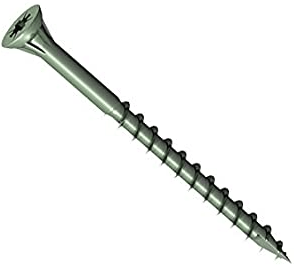
These types of screws are made of stainless steel or carbon steel. These are designed to attach wooden or composite boards to metal or wood. These screws can come in varying widths and lengths. These are ideal for the shipbuilding industry and can also be widely used in exterior fence building structures. These screws can be used to fasten wooden chairs or simple decking structures. The advantage of such screws is that it does not need pre-drilled holes.
(ii) Machine screw
These types of screws have a standard thread on a parallel shaft. These are designed such that they can be screwed into a tapped hole in a part. Hx screws are the most common type of machine screw. It is very similar to a hex bolt but it does not have the shank. Machine screws can be of many types depending upon the application which generally differs in the shape of the head.
(iii) Cap head screw
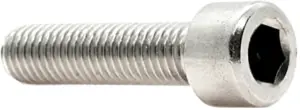
It consists of a barrel-shaped head with a socket that is designed to fit into a counterbored hole.
(iv) Pan head screw
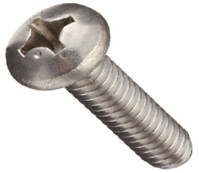
It has a domed head which is fitted with a socket. These types of head screws are identified from the appearance of their head, which looks very much similar to a frying pan kept upside-down. These are used in wood screws, self-drilling screws, self-tapping screws etc. They have wide heads with a flat bearing surface. Also, they exhibit high vertical and curved sides, and a flat or slightly domed top surface having a recessed socket. The socket consists of a slot for wood and self-tapping screws. These screw heads have a large diameter which when combined with high edges, provides a large and deep socket. This allows high torque during assembly while at the same time minimizing cam-out which might result in damage to the screw.
(v) Hex cap screw

These are particularly large-sized bolts having a hexagonal head. These types are used for attaching wood or metal. Hex screws have tiny steel threads which make them suitable for interior home improvement projects and also for stainless steel exterior tasks. One more feature of these screws is that they have a flat washer under the screw head and hence provide precise applications.
(vi) Oval head screw
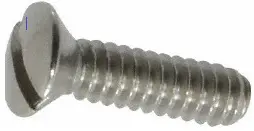
Their design features include undercut or trim heads having shorter screw lengths which allow longer thread grip. The oval countersunk screw heads comprise an aesthetically pleasing rounded finish top. These are mostly used for covering switches. They are also most suitable for making the finished product look more attractive. These stainless steel screws are very strong and durable and hence the need for maintenance can be totally eliminated.
(vii) Wood screw
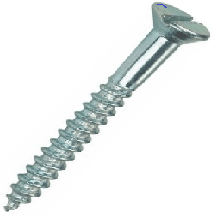
These types of screws consist of a threaded shaft that can be used to connect wood to wood. These types have varying thread times and are available in different heads. Flat and round heads are the most common types. These are useful for securing hinges. These are usually made from stainless steel or brass which makes them quite durable.
(viii) Sheet metal screw
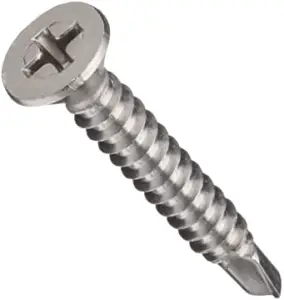
These types of screws are used to fasten or connect two pieces of sheet metal together to tubing or other metal types. These screws are available with different heads including flat, hex, and round. These are made from pure steel which has a weather-proof coating of aluminium or stainless steel. These are extensively used in welding industries.
Types of non-countersunk head screw
(i) Thread-rolling screw
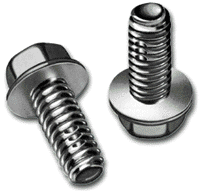
These types of screws do not cut threads into the material rather they create threads by exerting pressure against the wall of the material. These screws basically are used for softer materials like wood, plastic, or nylon. Their double lead thread style keeps the torque minimal and enhances pullout power.
(ii) Socket-head cap screw
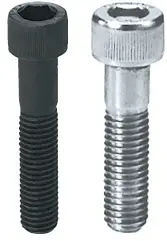
These types of screw heads find application where space is less or tight. The inner threading and cylindrical design of these screws make them ideal for applications where external wrench fasteners cannot be used. These types of screws are most extensively used in the automotive industry, machine tools, mining machinery, engineering industry etc. The advantage of such a screw head is that it needs fewer holes to be drilled. This allows for a total weight reduction on the component parts. These require less space as compared to the hexagonal head screw.
(iii) Set screw
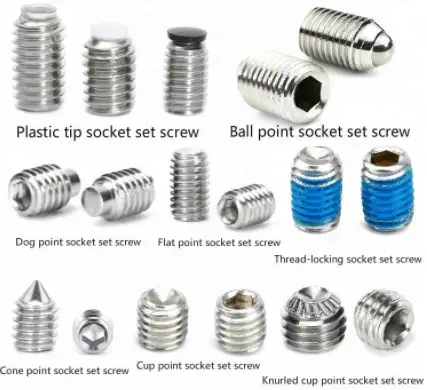
These types are used for fastening an object with another object, for example, gear or pulley can be fastened to a shaft with the help of a set screw. These screws do not have any head protruding out and are fully threaded. These types of set screws are available in different shapes and sizes. For example,
a. Flat set screw
These screws can very well adjust to the surface by aligning against the ground and hence minimize any damage.
b. Knurled cup screw
These screws possess a feature where a locking action can help stop the screw from loosening in applications with high vibration.
c. Cup point screw
These are the most prevalent types of set screws which can permanently hold components on any hard or soft surfaces.
d. Grub screw
These are a type of set screw that has its entire outer surface threaded. It does not have a head that allows it to be screwed all the way through a hole so that it gets locked against a part below the hole.

Great post. Definitely this one of the informative and useful post to me. Thanks for the share.